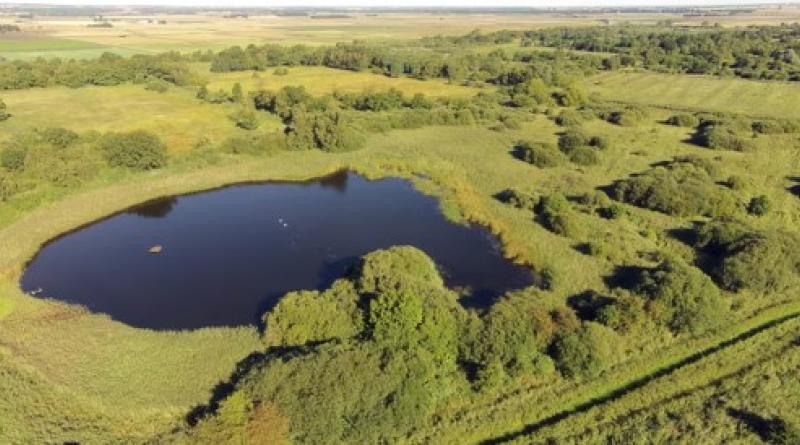East Anglian Fens were covered in yew trees 4,000 years ago, study finds

‘Bog oak’ study finds more than 400 well preserved yews, which could help solve mystery of historic rapid sea level rise
The flat landscape of the East Anglian Fens is known for its vast arable fields and absence of trees. But just over 4,000 years ago, these lowlands were dominated by dense woods of ancient yew trees.
A study of hundreds of tree trunks inadvertently dug up by fenland farmers has found that this woodland abruptly disappeared 4,200 years ago, probably because a rapid rise in the North Sea flooded the low-lying region with saltwater.
Remnant trees dug up during deep ploughing and discarded at field edges are popularly known as “bog oaks”. But when scientists from the University of Cambridge sampled the logs, they found more than 400 yew trees, some of which had been 400 years old when they died.
The ancient yews, one of the longest-lived species in Europe but today absent from the marshy Fens, were unusually well preserved, enabling the Cambridge team to extract precise information from trunks between 2 and 8 metres long.
Tatiana Bebchuk, the lead author of the paper published in Quaternary Science Reviews, said: “A common annoyance for Fenland farmers is getting their equipment caught on big pieces of wood buried in the soil, which can often happen when planting potatoes, since they are planted a little deeper than other crops.
“When I first saw this enormous pile of abandoned trees, it was incredible just how many there were. But when we got them back to lab, we were even more surprised: these trees were so well-preserved, it looked as if they were cut down just yesterday.”
Annual growth rings within tree trunks contain information about temperature and climate for each growing season. But finding tree rings so far back in time is unusual because wood rots.
These trunks, subfossils preserved in the peaty fenland soils, showed up to 400 years of irregular tree rings. Combined dendrochronological (tree-ring) analysis and radiocarbon dating pinpointed the ancient yews to a period from about 5,200 to 4,200 years ago, when a dense native woodland including oak as well as yew covered the Fens.
The researchers believe the yews declined as the region became wetter but suddenly disappeared because of an abrupt rise in sea level, which coincides with big climatic changes elsewhere in the world, including a mega-drought in China and the Middle East that could have caused the collapse of several civilisations, including Egypt’s Old Kingdom and the Akkadian Empire in Mesopotamia.
Bebchuck said: “We want to know if there is any link between these climatic events. Are the mega-droughts in Asia and the Middle East possibly related to the rapid sea level rise in northern Europe? Was this a global climate event, or was it a series of unrelated regional changes?
“We don’t yet know what could have caused these climate events, but these trees could be an important part of solving this detective story.”
Photograph: Henry Stanier/National Lottery Heritage Fund/PA






